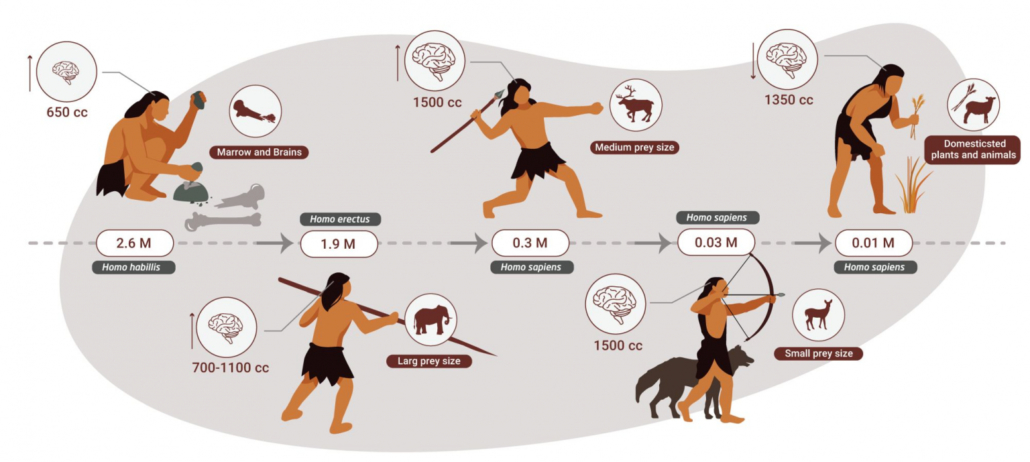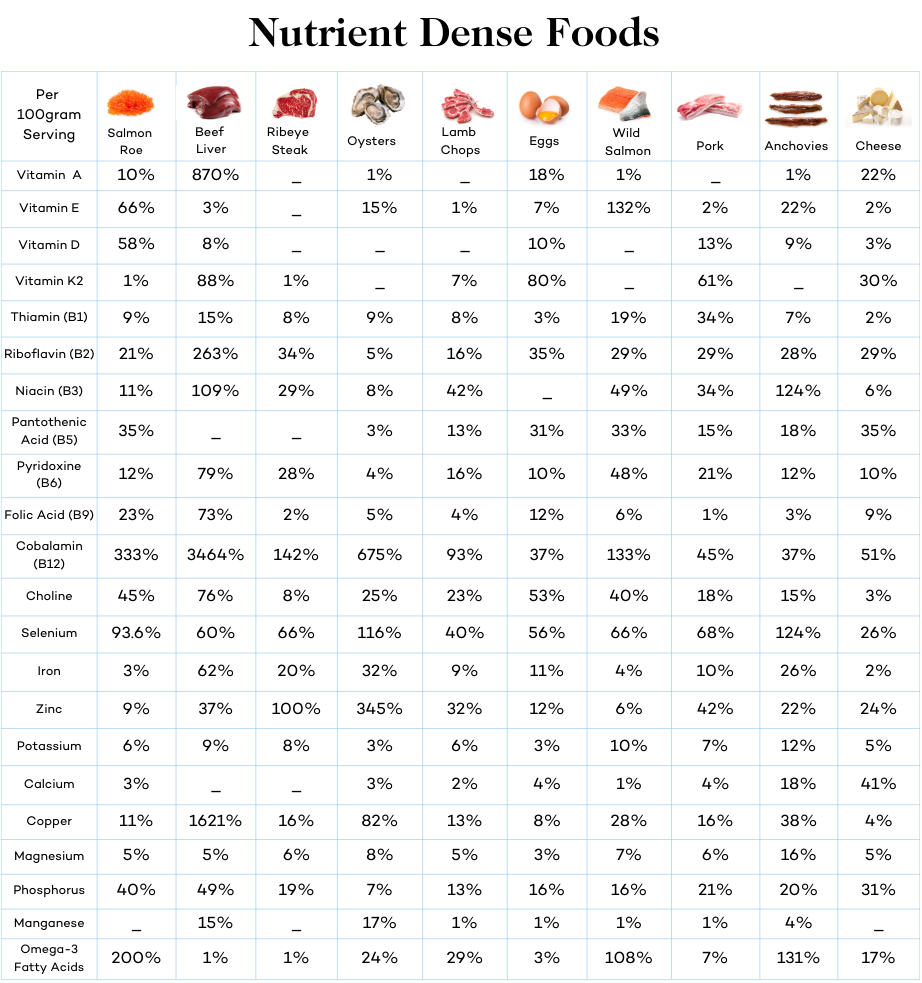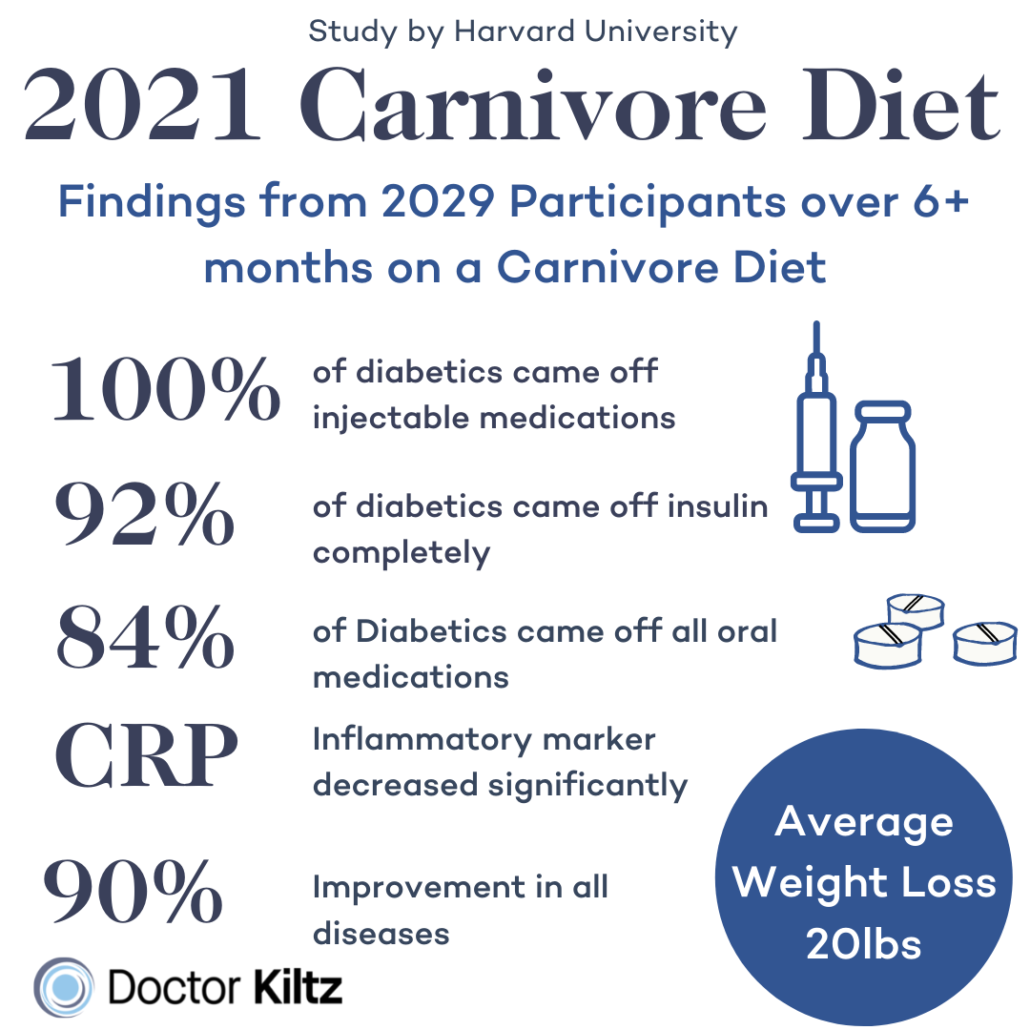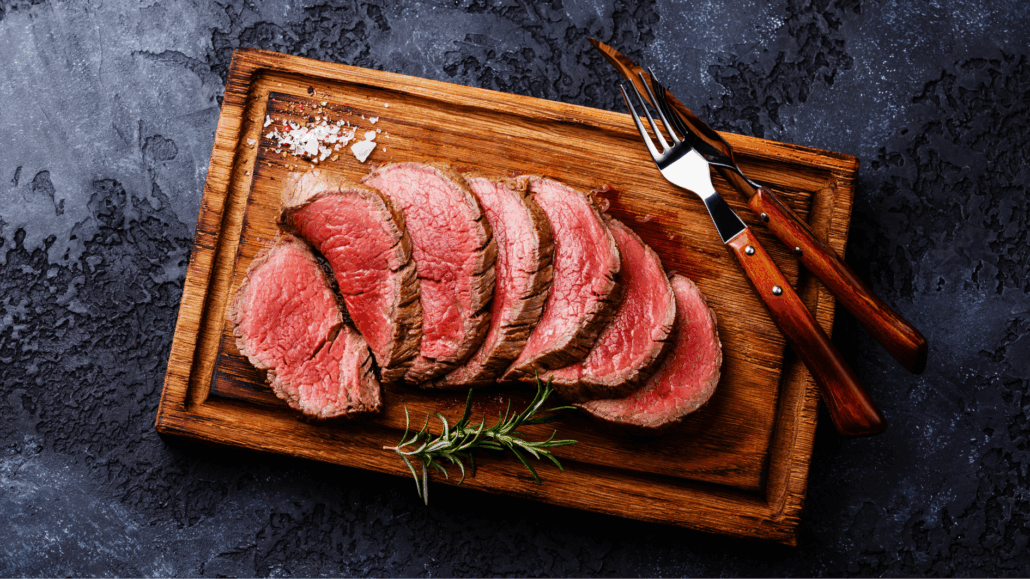We include products in articles we think are useful for our readers. If you buy products or services through links on our website, we may earn a small commission.
The Ancestral Diet: What it is, Benefits, and How to

Since the paleo diet became popular in the early 2000s, there has been a hot debate about what and what is not the true ancestral diet.
Paleo refers to the Paleolithic period that spanned from 3.3 million years ago to the dawn of agriculture around 10,000 years ago.
During this period, human physiology evolved in close relationship with the foods our ancestors ate.
The view follows that an ancestral diet can benefit our health by realigning our eating habits with our evolutionary physiology.
Though there is no single ancestral diet–where, when, and which ancestors are we talking about?– there is an abundance of scientific evidence suggesting that early humans across the globe consumed a high-fat, low-carb, mostly carnivorous diet.1
In this article, we’ll follow the evidence to reveal the common characteristics of an ancestral diet and explore how eating like our ancestors can benefit our health.
Table of Contents
Why Eat an Ancestral Diet?
Diseases related to chronic inflammation are the leading cause of death across the globe and have reached epidemic levels in developed countries.
Sixty percent of Americans have at least one chronic inflammatory disease, while four in 10 suffer from at least two chronic conditions, and 12% have 5 or more.
Across the globe, 3 out of 5 people die from chronic inflammatory diseases, including stroke, cardiovascular disease, respiratory diseases, heart disorders, cancer, obesity, type 2 diabetes, and various autoimmune disorders.
Because these diseases were virtually non-existent for our hunter-gatherer ancestors, we call them “diseases of civilization.”
The evidence suggests that the root cause of these inflammatory diseases is our modern diets and lifestyle.
The standard American/Western diet is high in:
- Ultra-processed foods like fast food and packaged foods
- Grains
- Added sugars
- Excess fiber
- Toxic industrial seed “vegetable” oils
- Cultivated high-sugar fruit that would be unrecognizable to our ancestors
- Cultivated vegetables that did not exist before the agricultural revolution
All of these modern “foods” fuel the fire of inflammation at the root of the diseases of civilization. While poor sleep, lack of movement, along with chronic stress, and anxiety add even more fuel to the flames.
Eliminating these modern foods and focusing on the foods our ancestors evolved to thrive on realigns our diet with our ancestral physiology.
What is the Ancestral Diet?
Taking an ancestral diet approach to health isn’t just theoretical. It’s based on both archeological evidence and the examples of modern-day hunter-gatherers.
The most common characteristic of modern-day hunter-gatherers is fatty and nutrient-dense animal foods.
In a field study of 229 remaining hunter-gatherer groups, researchers found that animal foods provided over two-thirds of their calories on average, with a range of 26 to 99 percent.
However, even these diets do not represent a true ancestral diet.
Our physiology, which derives from our hominid (human-like) ancestors, evolved over 3 million years before the dawn of the agricultural revolution, some 10,000 years ago.

Source: Dr Miki Ben Dor
During this vast expanse of time, the earth was teeming with giant, fatty mammals known as megafauna. Picture 20-foot tall tree sloths, 2-ton armadillos, elephants that are twice as large as they are today, and many other giant versions of modern animals.
With all these nutrients roaming around, humans evolved as hyper-carnivorous apex predators consuming an all-meat diet. There was no reason to expend energy on less calorically dense food sources like nuts and fruits.
As humans hunted megafauna into mass extinction around 10,000 years ago, humans consumed plant foods in significant quantities for the first time.
The Ancestral “Lipivore” Diet
Our ancestors relied so heavily on fatty animal foods for such a vast proportion of our evolution that our bodies are still genetically primed to thrive on fat. So much so that some researchers like Amber O’Hearn suggest that humans are most accurately classified as “lipivores,” or fat eaters.
Ancestral Diet Foods
When we look at the evidence for what our ancestors ate over the longest period of our evolution, we arrive at a mostly all-meat, or carnivore diet.
Though these days we don’t have giant tree sloths to hunt, we do have roughly equivalent foods from various animal sources.
Animal Products
Our hominid (pre-human) ancestors have been eating animal products for at least 3.3 million years.
Animal foods are among the most nutrient-dense foods on the planet. They contain high amounts of essential and powerful nutrients that do not exist or are insignificant in plant foods.
Some of these nutrients specific to meat include:
- Vitamin B12:liver, red meat, oysters, seafood. Essential for maintaining a healthy nervous system, the production of DNA and red blood cells, maintenance of cognitive function
- Choline: eggs, organ meats (beef liver, kidney), red meat, salmon roe, fish. Especially important for fertility–supports neurological development, fetal growth, and reduces risk of chronic diseases later in life
- Vitamin K2: Goose and beef liver, pork chops, eggs, chicken wings, cheese. Unlocks the potential of all other fat-soluble vitamins. Supports heart health, bone health, prevents cancer.
- Preformed vitamin A (retinol): Duck liver, lamb liver, cheese, salmon roe. Essential for healthy immune function, vision, physical growth, and fertility.
- Carnitine: Lamb, ribeye steak, pork. Supports brain and heart health while reducing aging by directly boosting cellular energy
- Heme iron: Red meat, liver. supports immune function, cognition, and energy metabolism
- Omega-3 fatty acids (DHA and EPA): Fatty fish, lamb. Anti-inflammatory, supports male and female fertility, basis of hormones that regulate blood clotting and health of arterial walls
- Conjugated linoleic acid (CLA): Lamb, beef, eggs. Supports immune function, strengthen bones, support heart health, improve excess fat loss, and significantly reduce the risk of various cancers
- Taurine: beef, fish, and dairy. Supports eye health, nervous system function, immune regulation, provides antioxidant effects, and balanced electrolytes
- Selenium: Eggs, liver, beef, fish. Supports thyroid health, immune function, DNA synthesis. Offer antioxidant, anti-cancer, and neuroprotective properties
- High-quality protein: Meat, eggs, dairy. Metabolic health, cognition, muscle growth, brain function.
As you can see from the list above, animal products mean more than just muscle meats.
Our ancestor’s diet was truly nose-to-tail, meaning that they prized organs, fat, and eggs as much if not more than muscle meat.
Not only are animal meats the most nutrient-dense foods on earthy, they also offer their nutrients in the most bioavailable form.
Bioavailability means that our body can absorb and use nutrients in meat far more efficiently than plant sources of vitamin A, protein, zinc, and iron, among others.

Ancestral Diet Food List
The list below, though not exhaustive, provides a foundation of nutrient-dense ancestrally-aligned foods.
| Ruminants | Pork | Poultry | fish | seafood | Organ meats | Wild meats | Fat | Eggs | Dairy | Fruits and Veggies |
| Beef Bison Goat Lamb | All types | Chicken Duck Goose Game hen Turkey Qual Pheasant | Salmon Halibut Mahi mahi Trout Tuna Cod Arctic Char Sardines Anchovies Mackerel Herring swordfish Snapper Walleye | Oysters Shrimp Prawns Lobster Mussels Scallops Crab Clams | Beef Liver Heart Brain Kidney Sweet- Breads Pancreas Tongue Tripe Testicals | Elk Venison Antelope Bear Rabbit Boar Rattlesnake Kangaroo | Tallow Lard Butter | Chicken eggs Duck eggs Goose Eggs Ostrich eggs Quail Eggs | Butter Ghee Cream Creme Fraiche Cheese Full-fat yogurt | x |
What About Vegetables, Fruits, Nuts, Seeds, Grains?
Modern vegetables, fruits, and oils (even olive oil) did not exist in the Paleolithic period.
Edible nuts, fruits, and seeds were few and far between, required substantial processing to remove toxins and anti-nutrients, and provided much fewer calories than modern GMO plant foods.
On the basis of caloric return, it simply wasn’t worth the effort for our ancestors to spend time and energy seeking out these inferior foods when there was an abundance of large fatty animals roaming around.
Furthermore, fire was needed to unlock the scant nutrients from tubers. Fire wasn’t invented until 300,000 years ago. Remember, we’re looking at eating patterns that are 3.3 million years old.
Grains were not part of the human diet until around 10,000 years ago. We see that the transition to a grain-based diet shrunk our skeletons, muscles, and brains and resulted in widespread disease.
If you insist on some vegetables, low-toxin “roots and fruits” like unblemished sweet potatoes and raspberries are most aligned with ancient eating practices but should be consumed sparingly.
What about Dairy?

Though dairy didn’t emerge until we became pastoralists around 10,000 years ago, full-fat dairy is rich in many bioavailable animal-food nutrients that you can’t get from plant sources.
If you tolerate dairy, this is one “modern” food that supports our genetic inheritance.
No Refined Sugar, Flour, or Seed Oils
An ancestral diet completely eliminates all refined sugar, grain flour, and seed “vegetable” oils.
These foods did not exist for our ancestors, and they are likely the key contributors to our modern epidemic of inflammatory diseases.
Seed oils, grains, and sugar together comprise nearly 70% percent of daily calories on a standard American diet.
Eliminating these inflammatory foods is a key to gaining the benefits of an ancestral diet.
Ancestral Diet Eating Plans
You can incorporate an ancestral diet into your modern life by simply consuming foods from the list above and eliminating all foods not on that list.
If you’d like some more guidance, here are a couple of popular approaches.
Lion Elimination Diet
Popularized by psychologist Jordan Peterson, the lion elimination diet calls for consuming only steak, water, and salt for at least a month.
The philosophy behind this diet is that it completely eliminates irritating and inflammatory foods while nourishing your body with bioavailable macro and micronutrients.
This gives your digestive system a chance to reset and repair issues like chronic inflammation and leaky gut caused by modern foods.
Dr. Kiltz’s BEBBIIS Diet

The B.E.B.B.I.I.S. (pronounced “babies”) Diet is an approach to eating that focuses on consuming one to two meals of minimally processed, high-fat, animal-based foods per day.
The acronym stands for Bacon, Eggs, Butter, Beef, Ice cream (Kiltz’s homemade keto ice cream), Intermittent feasting (aka fasting), and Salt.
In addition, the diet also welcomes other fatty cuts of meat from lamb, salmon, pork, bison, and chicken, along with other animal fats like lard and tallow and full-fat dairy like heavy cream and most cheeses.
Focusing your diet on these animal-based whole foods dramatically reduces inflammation, protects you from the ravages of carbohydrates, eliminates exposure to plant toxins, and nourishes every cell in your body with healthy fats and essential nutrients.
Through countless hours of research and the treatment of thousands of individuals with this diet, I discovered that not only did this high-fat carnivore-based diet dramatically improve both male and female fertility but that many of my patients were coming off other medications and improving their lives in other ways.
Researched Benefits of an Ancestral Carnivore Diet
Most “ancestral diet” research has centered on the paleo diet–an early and incorrect interpretation of the foods that humans primarily evolved eating.
However, in 2020, and 2021, large-scale studies looking specifically at the benefits of a carnivore diet yielded remarkably positive results.
A 2021 study by Harvard University researchers Dr. Belinda Lennerz and Dr. David Ludwig gathered data from 2,029 carnivore dieters over 6 months.

The researchers concluded: “Contrary to common expectations, adults consuming a carnivore diet experienced few adverse effects and instead reported health benefits and high satisfaction.” [1]
Significant health improvements included:
- 93% improved or resolved obesity and excess weight
- 93% improved hypertension
- 98% improved conditions related to diabetes
- 97% improved gastrointestinal symptoms
- 96% improved psychiatric symptoms
Close the Nutrient Gap with Organ Meat Supplements
For many people, a nose-to-tail diet with organ meats can feel like a bridge too far.
Finding organ meats can be difficult, and many people find their flavors and textures just too foreign to enjoy.
Fortunately, organ meat supplements are an efficient and tasteless way to incorporate meat-specific nutrients, and bioactive peptides only found in organ meats into your ancestral diet.
The Bottom Line on the Ancestral Diet
Following an ancestral diet nourishes your body with nutrient-dense superfoods that your physiology is evolved to thrive on.
Nearly as important is how an ancestral diet eliminates inflammatory sugars, seed oils, antinutrients, and plant toxins.
The health benefits of adopting an ancestral diet that reduces inflammation and resets your gut microbiome center on reducing your risk of the diseases of civilization, including:
- Cardiovascular disease
- Type 2 diabetes
- Neurological disorders
- Various cancers
- infertility
- Mood disorders
- Osteoporosis
- Various autoimmune disorders
By combining an ancestral diet with aspects of ancestral living, such as healthy movement routines, meditation, and earthing/ground, you can extend your health span and enjoy a life free of modern disease.















